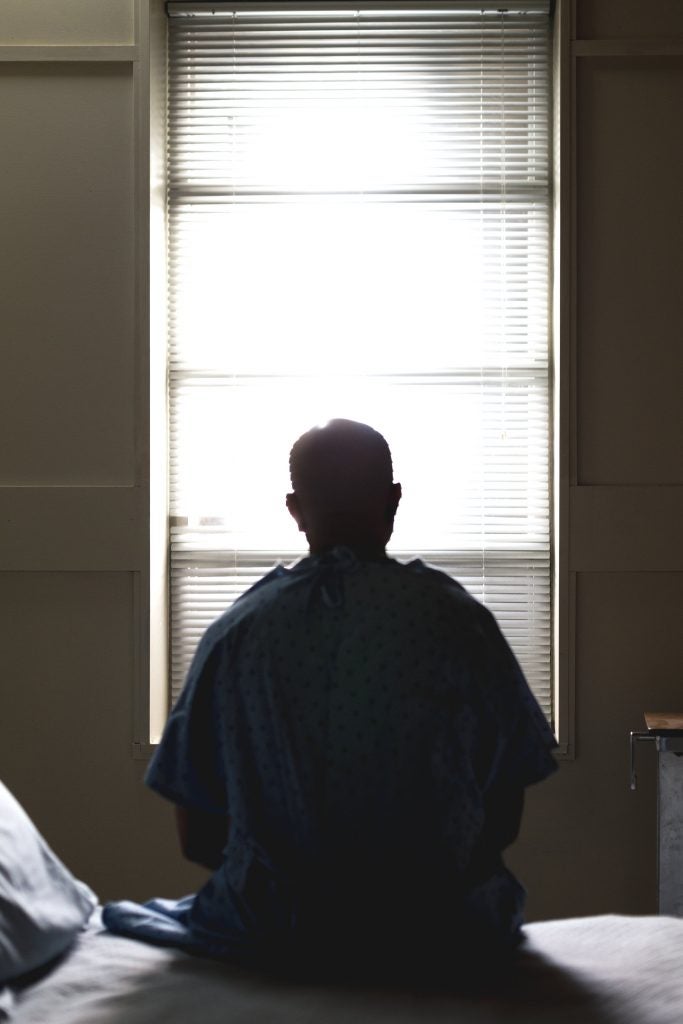
In early 2021 the estimated number of new cases of testicular cancer was 9,740. It is a rare disease, yet the chance of someone losing their life to it is only 1 in 5,000.1
Table of Contents
What is it?
Testicular cancer begins in the germ cells located in the testicles. Germ cells are responsible for making sperm cells and a vital part of reproduction.
There are two types of testicular cancer:
- Seminomas: tumors that grow slowly and are sensitive to radiation therapy.
- Nonseminomas: tumors that grow more quickly and are more difficult to treat.
Since these two types of cancer require very different treatments, understanding the differences between them and being able to distinguish them may be helpful for individuals with penises.
Symptoms
The following are common symptoms of testicular cancer:
- A painless lump in one of the testicles
- Swelling or enlargement of the testicles
- Pain or discomfort in the testicles or scrotum
- A mild, persistent ache in the lower abdomen, back, or groin
- A sudden collection of fluid in the scrotum2
Keep in mind that these are just some of the symptoms someone with testicular cancer may experience through the use of a blood test, ultrasound, or biopsy. In almost every biopsy for testicular cancer, the surgeon removes the entire testicle through an incision in the groin.3
Contrary to popular belief, doctors do not remove the testicle by cutting open the scrotum. Such an operation could cause the cancer to spread to other organs.3
Risk Factors
There are certain traits that may put individuals at a higher risk for testicular cancer development. Having an undescended testicle can be one of them. Normally, the testes descend into the scrotum during puberty, but sometimes one does not. People with undescended testes are at greater risk for testicular cancer. The risk is equally high even if they had a previous surgery to lower the testicle. Another common risk factor is previously having testicular cancer. Those who have had cancer in one testicle are more likely to develop it in the other, even after the affected testicle is surgically removed. Someone’s family history and age can also affect their chance of getting testicular cancer. People are more likely to develop testicular cancer if their biological relatives with a penis, such as fathers, brothers, or uncles, have had the disease, and most of those affected by testicular cancer fall between ages 15-35, yet it can still occur at earlier or later stages in life.4 In addition, this occurrence is more prevalent in some ethnicities than others. For example white people with penises more than any other ethnicities.5 It is vital for people to know when they are most at risk so that they consistently examine their bodies and find any signs of development early on when the success rate for combatting it is high.
While these factors alone do not predict testicular cancer, knowing that they increase the risk may allow someone to recognize cancer sooner and get treatment earlier. While these factors increase the risk, they are not guaranteed indicators of testicular cancer; as mentioned before, only a doctor can diagnose testicular cancer. These are commonalities that have been observed throughout history, and people with these traits should keep a closer eye out for cancer and practice regular self-examination.
Self-Examination Techniques
Though testicular cancer is neither as common nor as deadly as many other cancers, people with penises should still be aware of its symptoms and risk factors so that they can detect the disease in its earliest stages. Because testicular cancer is particularly common in young adults, regular examination of the testicles is crucial for the early detection of cancer. This examination can easily be performed after a bath or shower. To perform the examination, first, face a mirror and hold the penis away from the testicles so you can see them more easily. Then, one after the other, hold each testicle between your thumb and index finger and roll gently so that you can feel if there are any lumps or enlargements in the testes. If you feel any symptoms or have any concerns, be sure to voice your concerns to a doctor as soon as possible. Once again, testicular cancer cannot be self-diagnosed and medical professionals need to be involved.
Treatment
Fortunately, testicular cancer has an overall 95% survival rate; however, if the treatment does not occur until after the onset of the disease, the survival rate drops to 75%. Like other cancers, testicular cancer spreads to other organs if left unchecked. Therefore, it is best to detect and treat the disease as early as possible. Doctors may treat testicular cancer with any of the following three methods, or with some combination of them. Surgery is the surgical removal of the entire affected testicle. The doctor generally does this during the diagnosis process. Doctors might also choose to remove the lymph nodes surrounding the groin area so that the cancer cannot spread to them. Removing a testicle does not decrease one’s physiological sexual ability, though the stress of having cancer might decrease libido. People with penises only need one testicle in order to be fertile and produce a typical amount of male hormones. Removing one testicle does not cause impotence (the loss of the ability to have an erection). Some choose to have a gel-filled prosthesis implanted in the scrotum to replace the missing testicle, but the majority of men feel no need for a replacement. Radiation Therapy is the use of radiation to kill cancerous cells. Doctors often use radiation to eliminate any cancer that remains in the body after surgery. Finally, there’s also chemotherapy which is the use of anti-cancer drugs to kill cancerous cells. Like with radiation therapy, doctors will sometimes combine this method with surgery to eliminate all remaining cancer cells. Most of these drugs come in the form of injections.
These operations pose a slight risk that the patient will lose the ability to ejaculate, leaving him only capable of “dry” orgasms and rendering him infertile. Therefore, men with testicular cancer who want to have children may want to ask their doctors about sperm banking.7
Testicular Cancer and Masculinity
For some, having a disease that threatens their reproductive organs may cause them to feel as if part of their masculinity was stripped from them. They may feel that, along with losing one or both of their testicles, they are losing an element of their masculinity.” It is common for men who undergo surgery or chemotherapy for testicular cancer to feel a loss of masculinity immediately following treatment. This is a result of the historical conflation of masculinity with sexuality. When recovering from surgery or other treatments, the physiological sexual response can be inhibited and the survivor could potentially have a hard time engaging in intercourse. One survivor described his experience:

“At the beginning, when I first lost my testicle, I thought, Oh my God, I’m only half a man now. But that really went away quickly. Once I had been through my surgery and stuff like that, and after I was feeling better, we went back to, you know, making love. It was easy. I did not feel stifled.”8
Masculinity is not always the cause of insecurity in survivors. Body image issues often arise when recovering from such an extreme illness.8 This is a reason why some individuals may choose to have a prosthesis implanted in their scrotum to replace a lost testicle. In contrast, many survivors feel an elevated sense of confidence after surviving testicular cancer. Survivors often think of their condition as a “fight” in which they must bravely and confidently assert themselves against a life-threatening force. Winning this fight may instill a newfound confidence in survivors.
Concluding Remarks
Though less common and more treatable than other cancers, testicular cancer affects the lives of thousands of people with penises every year; it is therefore vital for people with penises to know how they can detect it early. If you have any further questions or concerns about testicular cancer, reach out to a medical professional.
References
- Facts about testicular cancer: Testicular cancer statistics. American Cancer Society. (2021, January 21).
- Testicular cancer – symptoms and signs. Cancer.Net. (2021, March 11).
- Staff, H. (2020, December 17). Orchiectomy for testicular cancer. Orchiectomy for Testicular Cancer | Michigan Medicine.
- Mayo Foundation for Medical Education and Research. (2020, April 24). Testicular cancer. Mayo Clinic.
- “Testicular Cancer Incidence Statistics.” Cancer Research UK. Cancer Research UK, 30 Apr. 2014.
- Types of testicular cancer. Johns Hopkins Medicine. (n.d.). Retrieved November 9, 2021,
- Ryan, S. J., & Hoyt, M. A. (2018). Adult self-image and well-being after testicular cancer: The role of agency and meaning. Psychology & health, 33(8), 1049–1061.
- Gordon, D.F. (1995). Testicular cancer and masculinity. Men’s Health and Illness: Gender, Power, and the Body. Thousand Oaks: Sage.
Last Updated: 9 November 2021
